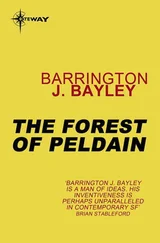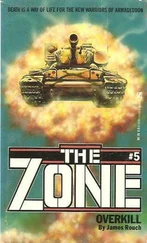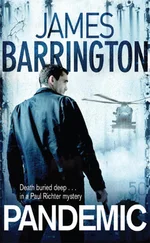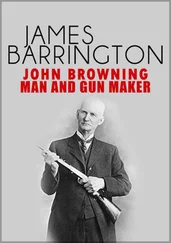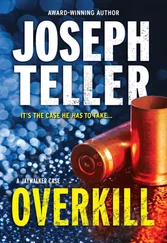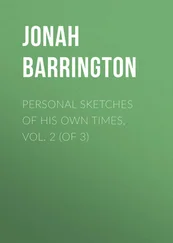The motorcade drove on into the Kremlin complex through Saviour’s Gate, the principal official entrance, in the left corner of the Kremlin wall. The Kremlin is a city within a city, occupying a seventy-acre site high above the Moskva River in the centre of Moscow. Basically a three-sided fortified citadel with a north-facing point, dominated by the Sobakin Tower, it is completely surrounded by a wall some fifty feet high reinforced by eighteen towers and pierced by four gates. There are three buildings in the northern section of the Kremlin. To the east is the smallest, the Kremlin Theatre. Half concealed behind the Theatre is the building of the Council of Ministers, ostensibly the home of the Russian government.
The third building is also the biggest; an extended rectangle pointing north and lying along the western façade of the Kremlin, behind the spiked outer wall and overlooking the Alexandrovsky Gardens. In the southern end of this building is the Armoury Chamber or Arsenal, a museum renowned for its collection of antique and pre-Revolutionary weapons, highly jewelled icons, delicate clocks and jewellery. Immediately behind the Arsenal all the interior walls are solid, and there is no internal access to the upper floors of the building. To reach those floors, visitors must pass through the tall wrought-iron barrier that guards the space between the Arsenal and the Ministers’ Building.
The upper Arsenal forms a hollow rectangle, four storeys high. Inside the building is a narrow courtyard aligned north–south that divides the area into two narrow sections. On the third floor, about halfway up the eastern block, overlooking the courtyard and hidden from prying eyes, is the Meeting Room. About fifteen metres long and eight metres wide, it’s decorated in the heavy, ponderous style which characterizes most Russian government buildings. In this room, every Thursday morning, the Politburo – the exclusive group of men at the pinnacle of the Central Committee of the Russian Communist Party and still the real power in Russia – meets and sits at the long green baize-topped table to discuss the government of the three hundred million citizens of the Confederation of Independent States. Adjoining the Meeting Room is the more intimate Walnut Room, with a smaller table and more comfortable seats, which is used for meetings when the full Politburo is not present.
The motorcade stopped beside the western end of the Council of Ministers building. The motorcycle outriders parked their machines in a protective circle around the cars and waited. At a signal from one of the outriders, both limousine drivers leapt out and opened the rear doors of their cars. Three men emerged from the first ZIL, and two from the second; all five walked briskly through the gateway and were quickly lost to sight.
Fifteen minutes later, a black Mercedes limousine stopped outside the building. One man got out and walked through the gateway.
Autoroute A26, vicinity of Couvron-et-Aumencourt
The older Russian followed Richter to the Transit without comment and sat down where he indicated. Oddly enough, he seemed relatively cheerful, bearing in mind what he’d been through that afternoon. ‘Let’s begin with some identification,’ Richter said. ‘My name is Beatty, and I am an agent of the British government.’
The Russian’s lips twisted in a gentle smile. ‘You seem to be a man of many names, Mr Beatty,’ he said. ‘Despite your somewhat battered appearance, I seem to recognize you from a slightly blurred photograph. But the name you gave then was Willis.’
Richter smiled back at him. ‘You have a good memory,’ he said, ‘and perhaps the cameras at Sheremetievo need adjusting. I used that name on my last visit to Moscow. May I ask who I am addressing?’
‘You have seen my passport, Mr Beatty.’
‘I know, but my question stands,’ Richter said. ‘Who are you? I don’t,’ he added, ‘really want to trawl through all our file photographs of GRU, KGB and SVR agents and officers. Apart from anything else, that would delay your release considerably.’
The Russian looked at him appraisingly. ‘Very well, Mr Beatty. My name is Modin, Nicolai Fedorovich Modin, and I am a senior SVR general.’
‘What are you prepared to tell me about the operation?’
Modin hesitated. ‘I should not really tell you anything,’ he said, ‘but the fact that we are sitting here means that you obviously know almost everything already. I also have no doubt that Bykov provided a good deal of information.’
‘I do know most of it,’ Richter replied, ‘but getting anything out of Viktor Bykov was very hard work, and there remain some details that I would like you to clarify. You will also notice that we are alone in this vehicle, and I assure you that nothing you say will necessarily be passed on to any third party.’
‘So you say, Mr Beatty. So you say.’ Modin didn’t sound even slightly convinced.
‘Was it,’ Richter asked, ‘a Group Nord operation?’
Modin shook his head. ‘No. In fact, Group Nord has been disbanded for several years. Operation Podstava – you would probably translate the word as “provocateur” – was directed from the start in great secrecy by Minister Dmitri Trushenko, acting on the direct orders of the Politburo. The plan was executed by a joint task force of SVR and GRU personnel.’
‘Isn’t that rather unusual?’ Richter asked. ‘A joint SVR–GRU operation?’
‘No, Mr Beatty,’ Modin said, ‘it’s not unusual – it’s unheard of. But, if I may mix my metaphors, desperate situations make for strange bedfellows. We needed facilities that only the GRU could give us, and if the plan was to work, we had to work with them. It was not a particularly edifying experience.’
Richter changed tack. ‘Why are you in France? Wasn’t that something of a risk for a man in your position, even carrying a diplomatic passport?’
Modin nodded. ‘It was a risk, yes, but I had been instructed by Minister Trushenko to witness the placement of the weapon myself. Viktor Bykov came with me ostensibly because he has been posted as the London GRU rezident , a post I cannot now imagine him occupying. In fact, he has been the principal GRU liaison officer on this project since its inception.’
‘You said “ostensibly”,’ Richter asked. ‘Why did you use that word?’
Modin smiled, then actually laughed. ‘Excuse me,’ he said, ‘I will explain. First, may I ask you a question?’
Richter nodded. ‘I can’t promise to answer, but you can certainly ask,’ he said.
‘Thank you,’ Modin said. ‘Have you discussed this matter with the Americans?’
‘Yes,’ Richter replied. ‘In fact, we have a senior CIA officer here as an observer.’
‘Perhaps it might be better, Mr Beatty, if he was present before I say anything else.’
‘Why?’ Richter asked.
‘Because it will save time, and time is something you don’t have a great deal of.’
Richter thought for a few moments. ‘OK,’ he said, opened the rear door of the Transit and called John Westwood over, taking care to use only his Christian name. ‘General Modin, this is John, from the CIA. John, this is General Nicolai Modin of the SVR,’ Richter said.
‘Did you,’ Modin asked Westwood, ‘tell the British that you had developed a source – I believe you would call it a “walk-in” – in Moscow? A high-level source?’
Westwood looked somewhat sheepishly at Richter, then nodded. ‘We did,’ he replied, ‘although only very recently. We were trying,’ he went on, ‘to clarify the situation without involving our allies. That was possibly a mistake.’ Richter nodded in agreement.
‘We knew about the “walk-in”,’ Modin said. ‘I briefed a colleague to try to identify the traitor. He spent a great deal of time and effort in trying to find anyone who could have passed information to the Americans, but he was not successful. However,’ Modin added, ‘he and I both agreed that the most likely candidate was Viktor Bykov, which is the real reason why Bykov was with me and why he was travelling to take up a post in London.’
Читать дальше





